ANA AMORIM'S REGISTER OF THE ROUTINE
The exhibition Contar Rutinas (Counting Routines) dedicated by the Cerezales Antonino and Cinia Foundation to the work of Ana Amorim (São Paulo, Brazil, 1956) includes a selection of actions and performative works and installations that reflect the activity of the Brazilian artist from the 1980s to the present. The architecture of this exhibition is marked by the artist's daily conceptual and performative routines, reflecting their influence in the results of monumental dimensions.
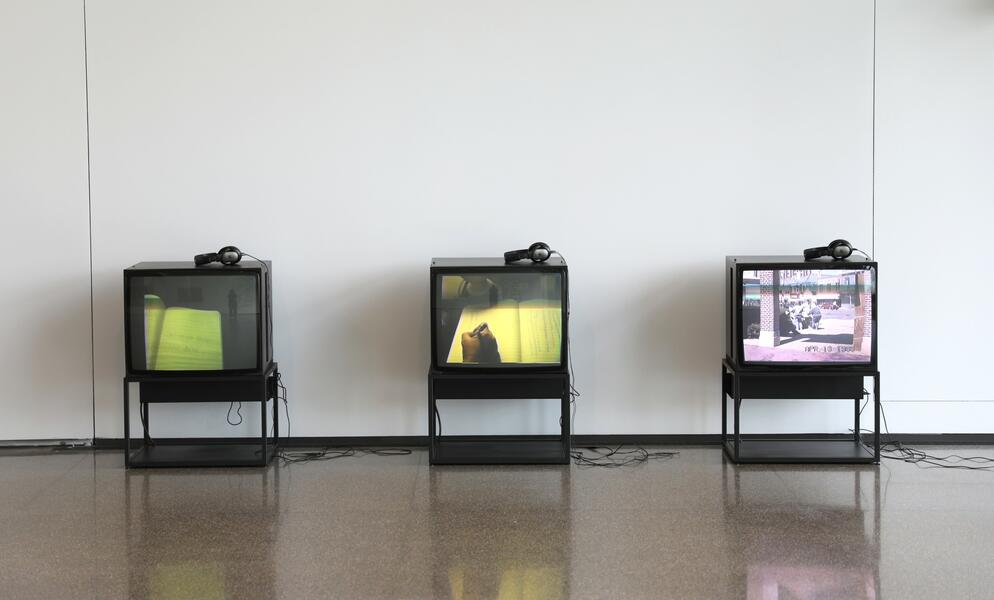
Among the selection of 23 works of various sizes, techniques and formats that trace her artistic practice over the last four decades, the installations of Mapas Mentales (Mental Maps), called Grandes Telas (Large Canvases) by the artist, and the records of time she developed in her contextual Contaje de Segundos (Counting Seconds Performances) stand out, both examples of several key aspects that have been shaping the artist's production.
With these practices, Amorim tries to explain her commitment to the activity of recording her life and the lives of those around her, to the meticulous annotation of the reality that surrounds her, a praxis that, at its base, advocates moving away from aesthetic criteria in favor of recurring events and acts.
Counting routines. Ana Amorim can be seen until March 9 at Fundación Cerezales Antonino y Cinia, Antonino Fernández, 76, Cerezales del Condado (Spain).
Related Topics
May interest you
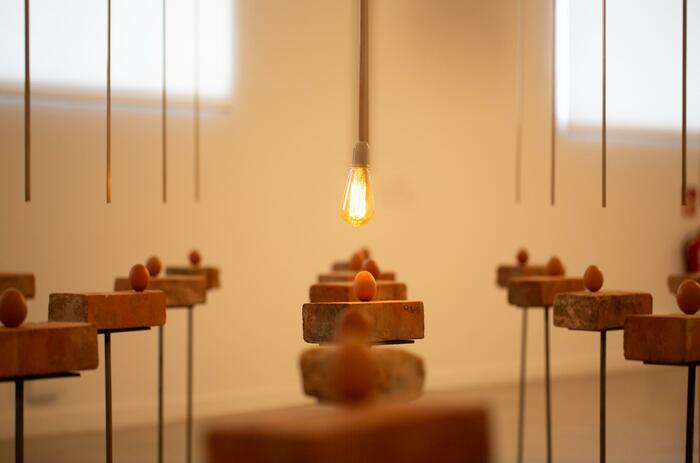
Contemplando es como fuimos cambiando (Contemplating is how we changed) is the exhibition, the first one in Spain promoted by an institution, that the CICC Tabakalera in San Sebastian is dedicating to Gabriel Chaile (San Miguel de Tucumán, Argentina, 1985), one of the most prominent names in contemporary Latin American sculpture. This proposal is intended to take an extensive look at his work, from his beginnings to his latest works produced in Lisbon, and which is recognizable by his monumental adobe, clay and metal pieces that reflect the morphology of the pre-Columbian ceramics of his native region.
GABRIEL CHAILE’S SCULPTURE AT TABAKALERA
Contemplando es como fuimos cambiando (Contemplating is how we changed) is the exhibition, the first one in Spain promoted by an institution, that the CICC Tabakalera in San Sebastian is dedicating to Gabriel Chaile (San Miguel de Tucumán, Argentina, 1985), one of the most prominent names in contemporary Latin American sculpture. This proposal is intended to take an extensive look at his work, from his beginnings to his latest works produced in Lisbon, and which is recognizable by his monumental adobe, clay and metal pieces that reflect the morphology of the pre-Columbian ceramics of his native region.

Contemplando es como fuimos cambiando (Contemplating is how we changed) is the exhibition, the first one in Spain promoted by an institution, that the CICC Tabakalera in San Sebastian is dedicating to Gabriel Chaile (San Miguel de Tucumán, Argentina, 1985), one of the most prominent names in contemporary Latin American sculpture. This proposal is intended to take an extensive look at his work, from his beginnings to his latest works produced in Lisbon, and which is recognizable by his monumental adobe, clay and metal pieces that reflect the morphology of the pre-Columbian ceramics of his native region.
GABRIEL CHAILE’S SCULPTURE AT TABAKALERA
Contemplando es como fuimos cambiando (Contemplating is how we changed) is the exhibition, the first one in Spain promoted by an institution, that the CICC Tabakalera in San Sebastian is dedicating to Gabriel Chaile (San Miguel de Tucumán, Argentina, 1985), one of the most prominent names in contemporary Latin American sculpture. This proposal is intended to take an extensive look at his work, from his beginnings to his latest works produced in Lisbon, and which is recognizable by his monumental adobe, clay and metal pieces that reflect the morphology of the pre-Columbian ceramics of his native region.
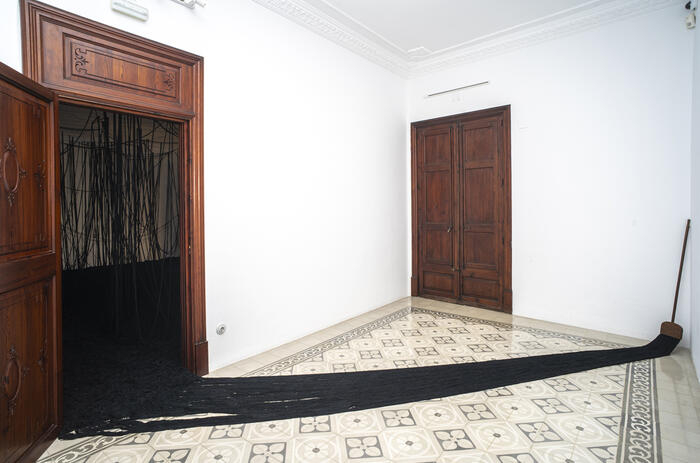
ALTTRA Foundation organizes in three spaces in Palma, on the island of Mallorca, an exhibition that addresses the theme of insularity and its role and idiosyncrasy in a globalized world through several works by Cildo Meireles (Rio de Janeiro, Brazil, 1948). The works chosen, corresponding to five different periods of the artistic production of one of the referents of Brazilian neo-conceptualism, trace a journey through some of the themes and investigations that the artist has developed throughout his life, from fortune and chance to the perception of the physically invisible but perceptible, such as sound, or the relationship between space and its use.
CILDO MEIRELES EN PALMA DE MALLORCA
ALTTRA Foundation organizes in three spaces in Palma, on the island of Mallorca, an exhibition that addresses the theme of insularity and its role and idiosyncrasy in a globalized world through several works by Cildo Meireles (Rio de Janeiro, Brazil, 1948). The works chosen, corresponding to five different periods of the artistic production of one of the referents of Brazilian neo-conceptualism, trace a journey through some of the themes and investigations that the artist has developed throughout his life, from fortune and chance to the perception of the physically invisible but perceptible, such as sound, or the relationship between space and its use.
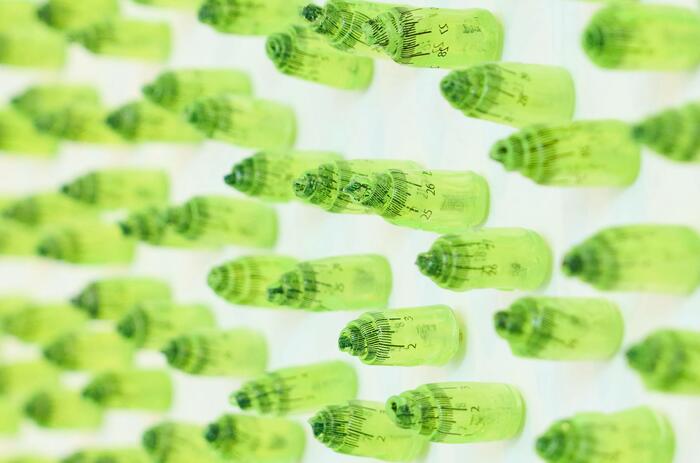
In its third consecutive edition at The Hangar, in Coconut Grove, the Pinta Miami 2024 fair celebrates its eighteenth edition from December 5 to 8 with proposals that make visible the diverse artistic narratives of Latin America. An opportunity for gallerists, artists, curators, collectors and art lovers that seek to explore the region's contemporary discourses.
PINTA MIAMI: IDENTITY, FUTURE AND TERRITORY
In its third consecutive edition at The Hangar, in Coconut Grove, the Pinta Miami 2024 fair celebrates its eighteenth edition from December 5 to 8 with proposals that make visible the diverse artistic narratives of Latin America. An opportunity for gallerists, artists, curators, collectors and art lovers that seek to explore the region's contemporary discourses.

Isabel Hurley Gallery in Malaga dedicates an exhibition as a tribute to Alberto Borea (Lima, Peru, 1971- ibidem, 2020). El negro estuvo aquí (2008-2013) goes through his last five years of production through a selection of representative works that were part of the solo shows Ruinas y ciudades, Mountains of America and Turista El Dorado, all of them exhibitions that the Peruvian made in this same gallery, in addition to the proposals made to be exhibited in Volta NY 2011 and ARCO 2013.
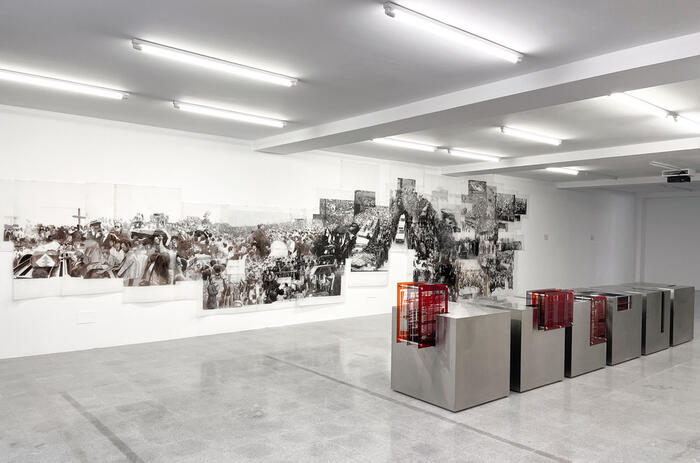
The work of Voluspa Jarpa (Rancagua, Chile, 1971) has had a very preeminent focus on the political concept surrounding archiving and its documents. Attracted to investigate more about its multiple meanings as a result of the declassification of secrets, specifically the one carried out by the Clinton administration regarding the 1973 coup d'état against Salvador Allende, the artist begins a discursive investigation on the importance of the archival support and the materiality it has as a political document, which leads her to qualify that presupposed legibility.
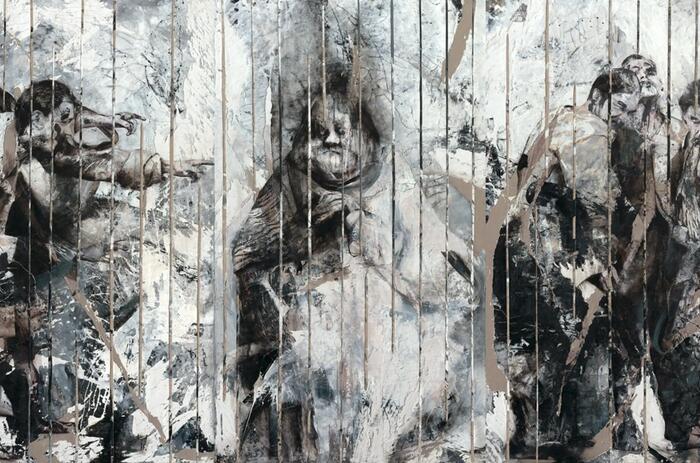
Goya's Los Disparates preceded, or marked, painting's entry into modernity. Beyond this historiographical note, the series by the Aragonese master captures with masterful imagery the vicissitudes of irony, sarcasm and the darkness of a reality that has lasted through time to the present day. The plates of his etchings become the surface that deposits this reality, and the result, once impregnated, works as a full reminder of the origin of our essence, our fears and our actions.
LITA CABELLUT IN DIALOGUE WITH GOYA
Goya's Los Disparates preceded, or marked, painting's entry into modernity. Beyond this historiographical note, the series by the Aragonese master captures with masterful imagery the vicissitudes of irony, sarcasm and the darkness of a reality that has lasted through time to the present day. The plates of his etchings become the surface that deposits this reality, and the result, once impregnated, works as a full reminder of the origin of our essence, our fears and our actions.
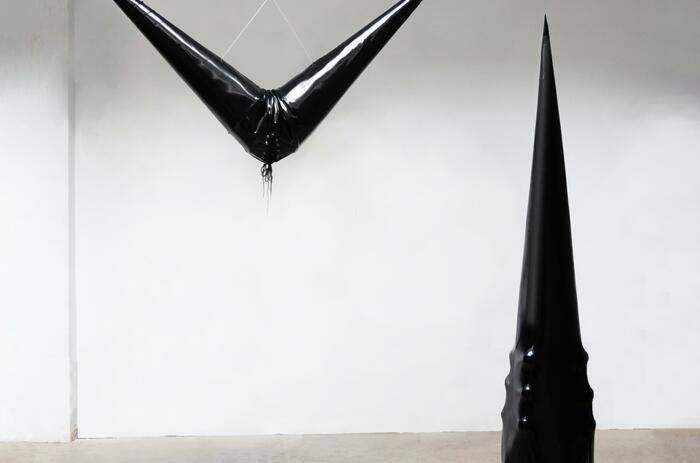
The result of the selection proposed to represent Circuitos de Artes Plásticas 2024, one of the main emerging art projects of the Community of Madrid, has had in this edition a Latin American protagonist in the curatorial work of Isabella Lenzi (São Paulo, Brazil, 1986). The show, named Caja de resonancia (Resonance Box) for the occasion, reviews, through the ten winning works of this annual call, some of the recurring themes and matrixes in the under-35 generation of artists linked to Madrid.
LENZI'S ON YOUNG ART IN MADRID
The result of the selection proposed to represent Circuitos de Artes Plásticas 2024, one of the main emerging art projects of the Community of Madrid, has had in this edition a Latin American protagonist in the curatorial work of Isabella Lenzi (São Paulo, Brazil, 1986). The show, named Caja de resonancia (Resonance Box) for the occasion, reviews, through the ten winning works of this annual call, some of the recurring themes and matrixes in the under-35 generation of artists linked to Madrid.

Contemplando es como fuimos cambiando (Contemplating is how we changed) is the exhibition, the first one in Spain promoted by an institution, that the CICC Tabakalera in San Sebastian is dedicating to Gabriel Chaile (San Miguel de Tucumán, Argentina, 1985), one of the most prominent names in contemporary Latin American sculpture. This proposal is intended to take an extensive look at his work, from his beginnings to his latest works produced in Lisbon, and which is recognizable by his monumental adobe, clay and metal pieces that reflect the morphology of the pre-Columbian ceramics of his native region.
GABRIEL CHAILE’S SCULPTURE AT TABAKALERA
Contemplando es como fuimos cambiando (Contemplating is how we changed) is the exhibition, the first one in Spain promoted by an institution, that the CICC Tabakalera in San Sebastian is dedicating to Gabriel Chaile (San Miguel de Tucumán, Argentina, 1985), one of the most prominent names in contemporary Latin American sculpture. This proposal is intended to take an extensive look at his work, from his beginnings to his latest works produced in Lisbon, and which is recognizable by his monumental adobe, clay and metal pieces that reflect the morphology of the pre-Columbian ceramics of his native region.

ALTTRA Foundation organizes in three spaces in Palma, on the island of Mallorca, an exhibition that addresses the theme of insularity and its role and idiosyncrasy in a globalized world through several works by Cildo Meireles (Rio de Janeiro, Brazil, 1948). The works chosen, corresponding to five different periods of the artistic production of one of the referents of Brazilian neo-conceptualism, trace a journey through some of the themes and investigations that the artist has developed throughout his life, from fortune and chance to the perception of the physically invisible but perceptible, such as sound, or the relationship between space and its use.
CILDO MEIRELES EN PALMA DE MALLORCA
ALTTRA Foundation organizes in three spaces in Palma, on the island of Mallorca, an exhibition that addresses the theme of insularity and its role and idiosyncrasy in a globalized world through several works by Cildo Meireles (Rio de Janeiro, Brazil, 1948). The works chosen, corresponding to five different periods of the artistic production of one of the referents of Brazilian neo-conceptualism, trace a journey through some of the themes and investigations that the artist has developed throughout his life, from fortune and chance to the perception of the physically invisible but perceptible, such as sound, or the relationship between space and its use.

In its third consecutive edition at The Hangar, in Coconut Grove, the Pinta Miami 2024 fair celebrates its eighteenth edition from December 5 to 8 with proposals that make visible the diverse artistic narratives of Latin America. An opportunity for gallerists, artists, curators, collectors and art lovers that seek to explore the region's contemporary discourses.
PINTA MIAMI: IDENTITY, FUTURE AND TERRITORY
In its third consecutive edition at The Hangar, in Coconut Grove, the Pinta Miami 2024 fair celebrates its eighteenth edition from December 5 to 8 with proposals that make visible the diverse artistic narratives of Latin America. An opportunity for gallerists, artists, curators, collectors and art lovers that seek to explore the region's contemporary discourses.

Isabel Hurley Gallery in Malaga dedicates an exhibition as a tribute to Alberto Borea (Lima, Peru, 1971- ibidem, 2020). El negro estuvo aquí (2008-2013) goes through his last five years of production through a selection of representative works that were part of the solo shows Ruinas y ciudades, Mountains of America and Turista El Dorado, all of them exhibitions that the Peruvian made in this same gallery, in addition to the proposals made to be exhibited in Volta NY 2011 and ARCO 2013.

The work of Voluspa Jarpa (Rancagua, Chile, 1971) has had a very preeminent focus on the political concept surrounding archiving and its documents. Attracted to investigate more about its multiple meanings as a result of the declassification of secrets, specifically the one carried out by the Clinton administration regarding the 1973 coup d'état against Salvador Allende, the artist begins a discursive investigation on the importance of the archival support and the materiality it has as a political document, which leads her to qualify that presupposed legibility.

Goya's Los Disparates preceded, or marked, painting's entry into modernity. Beyond this historiographical note, the series by the Aragonese master captures with masterful imagery the vicissitudes of irony, sarcasm and the darkness of a reality that has lasted through time to the present day. The plates of his etchings become the surface that deposits this reality, and the result, once impregnated, works as a full reminder of the origin of our essence, our fears and our actions.
LITA CABELLUT IN DIALOGUE WITH GOYA
Goya's Los Disparates preceded, or marked, painting's entry into modernity. Beyond this historiographical note, the series by the Aragonese master captures with masterful imagery the vicissitudes of irony, sarcasm and the darkness of a reality that has lasted through time to the present day. The plates of his etchings become the surface that deposits this reality, and the result, once impregnated, works as a full reminder of the origin of our essence, our fears and our actions.

The result of the selection proposed to represent Circuitos de Artes Plásticas 2024, one of the main emerging art projects of the Community of Madrid, has had in this edition a Latin American protagonist in the curatorial work of Isabella Lenzi (São Paulo, Brazil, 1986). The show, named Caja de resonancia (Resonance Box) for the occasion, reviews, through the ten winning works of this annual call, some of the recurring themes and matrixes in the under-35 generation of artists linked to Madrid.
LENZI'S ON YOUNG ART IN MADRID
The result of the selection proposed to represent Circuitos de Artes Plásticas 2024, one of the main emerging art projects of the Community of Madrid, has had in this edition a Latin American protagonist in the curatorial work of Isabella Lenzi (São Paulo, Brazil, 1986). The show, named Caja de resonancia (Resonance Box) for the occasion, reviews, through the ten winning works of this annual call, some of the recurring themes and matrixes in the under-35 generation of artists linked to Madrid.

Contemplando es como fuimos cambiando (Contemplating is how we changed) is the exhibition, the first one in Spain promoted by an institution, that the CICC Tabakalera in San Sebastian is dedicating to Gabriel Chaile (San Miguel de Tucumán, Argentina, 1985), one of the most prominent names in contemporary Latin American sculpture. This proposal is intended to take an extensive look at his work, from his beginnings to his latest works produced in Lisbon, and which is recognizable by his monumental adobe, clay and metal pieces that reflect the morphology of the pre-Columbian ceramics of his native region.
GABRIEL CHAILE’S SCULPTURE AT TABAKALERA
Contemplando es como fuimos cambiando (Contemplating is how we changed) is the exhibition, the first one in Spain promoted by an institution, that the CICC Tabakalera in San Sebastian is dedicating to Gabriel Chaile (San Miguel de Tucumán, Argentina, 1985), one of the most prominent names in contemporary Latin American sculpture. This proposal is intended to take an extensive look at his work, from his beginnings to his latest works produced in Lisbon, and which is recognizable by his monumental adobe, clay and metal pieces that reflect the morphology of the pre-Columbian ceramics of his native region.

ALTTRA Foundation organizes in three spaces in Palma, on the island of Mallorca, an exhibition that addresses the theme of insularity and its role and idiosyncrasy in a globalized world through several works by Cildo Meireles (Rio de Janeiro, Brazil, 1948). The works chosen, corresponding to five different periods of the artistic production of one of the referents of Brazilian neo-conceptualism, trace a journey through some of the themes and investigations that the artist has developed throughout his life, from fortune and chance to the perception of the physically invisible but perceptible, such as sound, or the relationship between space and its use.
CILDO MEIRELES EN PALMA DE MALLORCA
ALTTRA Foundation organizes in three spaces in Palma, on the island of Mallorca, an exhibition that addresses the theme of insularity and its role and idiosyncrasy in a globalized world through several works by Cildo Meireles (Rio de Janeiro, Brazil, 1948). The works chosen, corresponding to five different periods of the artistic production of one of the referents of Brazilian neo-conceptualism, trace a journey through some of the themes and investigations that the artist has developed throughout his life, from fortune and chance to the perception of the physically invisible but perceptible, such as sound, or the relationship between space and its use.

In its third consecutive edition at The Hangar, in Coconut Grove, the Pinta Miami 2024 fair celebrates its eighteenth edition from December 5 to 8 with proposals that make visible the diverse artistic narratives of Latin America. An opportunity for gallerists, artists, curators, collectors and art lovers that seek to explore the region's contemporary discourses.
PINTA MIAMI: IDENTITY, FUTURE AND TERRITORY
In its third consecutive edition at The Hangar, in Coconut Grove, the Pinta Miami 2024 fair celebrates its eighteenth edition from December 5 to 8 with proposals that make visible the diverse artistic narratives of Latin America. An opportunity for gallerists, artists, curators, collectors and art lovers that seek to explore the region's contemporary discourses.

Isabel Hurley Gallery in Malaga dedicates an exhibition as a tribute to Alberto Borea (Lima, Peru, 1971- ibidem, 2020). El negro estuvo aquí (2008-2013) goes through his last five years of production through a selection of representative works that were part of the solo shows Ruinas y ciudades, Mountains of America and Turista El Dorado, all of them exhibitions that the Peruvian made in this same gallery, in addition to the proposals made to be exhibited in Volta NY 2011 and ARCO 2013.

The work of Voluspa Jarpa (Rancagua, Chile, 1971) has had a very preeminent focus on the political concept surrounding archiving and its documents. Attracted to investigate more about its multiple meanings as a result of the declassification of secrets, specifically the one carried out by the Clinton administration regarding the 1973 coup d'état against Salvador Allende, the artist begins a discursive investigation on the importance of the archival support and the materiality it has as a political document, which leads her to qualify that presupposed legibility.

Goya's Los Disparates preceded, or marked, painting's entry into modernity. Beyond this historiographical note, the series by the Aragonese master captures with masterful imagery the vicissitudes of irony, sarcasm and the darkness of a reality that has lasted through time to the present day. The plates of his etchings become the surface that deposits this reality, and the result, once impregnated, works as a full reminder of the origin of our essence, our fears and our actions.
LITA CABELLUT IN DIALOGUE WITH GOYA
Goya's Los Disparates preceded, or marked, painting's entry into modernity. Beyond this historiographical note, the series by the Aragonese master captures with masterful imagery the vicissitudes of irony, sarcasm and the darkness of a reality that has lasted through time to the present day. The plates of his etchings become the surface that deposits this reality, and the result, once impregnated, works as a full reminder of the origin of our essence, our fears and our actions.

The result of the selection proposed to represent Circuitos de Artes Plásticas 2024, one of the main emerging art projects of the Community of Madrid, has had in this edition a Latin American protagonist in the curatorial work of Isabella Lenzi (São Paulo, Brazil, 1986). The show, named Caja de resonancia (Resonance Box) for the occasion, reviews, through the ten winning works of this annual call, some of the recurring themes and matrixes in the under-35 generation of artists linked to Madrid.
LENZI'S ON YOUNG ART IN MADRID
The result of the selection proposed to represent Circuitos de Artes Plásticas 2024, one of the main emerging art projects of the Community of Madrid, has had in this edition a Latin American protagonist in the curatorial work of Isabella Lenzi (São Paulo, Brazil, 1986). The show, named Caja de resonancia (Resonance Box) for the occasion, reviews, through the ten winning works of this annual call, some of the recurring themes and matrixes in the under-35 generation of artists linked to Madrid.

Contemplando es como fuimos cambiando (Contemplating is how we changed) is the exhibition, the first one in Spain promoted by an institution, that the CICC Tabakalera in San Sebastian is dedicating to Gabriel Chaile (San Miguel de Tucumán, Argentina, 1985), one of the most prominent names in contemporary Latin American sculpture. This proposal is intended to take an extensive look at his work, from his beginnings to his latest works produced in Lisbon, and which is recognizable by his monumental adobe, clay and metal pieces that reflect the morphology of the pre-Columbian ceramics of his native region.
GABRIEL CHAILE’S SCULPTURE AT TABAKALERA
Contemplando es como fuimos cambiando (Contemplating is how we changed) is the exhibition, the first one in Spain promoted by an institution, that the CICC Tabakalera in San Sebastian is dedicating to Gabriel Chaile (San Miguel de Tucumán, Argentina, 1985), one of the most prominent names in contemporary Latin American sculpture. This proposal is intended to take an extensive look at his work, from his beginnings to his latest works produced in Lisbon, and which is recognizable by his monumental adobe, clay and metal pieces that reflect the morphology of the pre-Columbian ceramics of his native region.

ALTTRA Foundation organizes in three spaces in Palma, on the island of Mallorca, an exhibition that addresses the theme of insularity and its role and idiosyncrasy in a globalized world through several works by Cildo Meireles (Rio de Janeiro, Brazil, 1948). The works chosen, corresponding to five different periods of the artistic production of one of the referents of Brazilian neo-conceptualism, trace a journey through some of the themes and investigations that the artist has developed throughout his life, from fortune and chance to the perception of the physically invisible but perceptible, such as sound, or the relationship between space and its use.
CILDO MEIRELES EN PALMA DE MALLORCA
ALTTRA Foundation organizes in three spaces in Palma, on the island of Mallorca, an exhibition that addresses the theme of insularity and its role and idiosyncrasy in a globalized world through several works by Cildo Meireles (Rio de Janeiro, Brazil, 1948). The works chosen, corresponding to five different periods of the artistic production of one of the referents of Brazilian neo-conceptualism, trace a journey through some of the themes and investigations that the artist has developed throughout his life, from fortune and chance to the perception of the physically invisible but perceptible, such as sound, or the relationship between space and its use.

In its third consecutive edition at The Hangar, in Coconut Grove, the Pinta Miami 2024 fair celebrates its eighteenth edition from December 5 to 8 with proposals that make visible the diverse artistic narratives of Latin America. An opportunity for gallerists, artists, curators, collectors and art lovers that seek to explore the region's contemporary discourses.
PINTA MIAMI: IDENTITY, FUTURE AND TERRITORY
In its third consecutive edition at The Hangar, in Coconut Grove, the Pinta Miami 2024 fair celebrates its eighteenth edition from December 5 to 8 with proposals that make visible the diverse artistic narratives of Latin America. An opportunity for gallerists, artists, curators, collectors and art lovers that seek to explore the region's contemporary discourses.

Isabel Hurley Gallery in Malaga dedicates an exhibition as a tribute to Alberto Borea (Lima, Peru, 1971- ibidem, 2020). El negro estuvo aquí (2008-2013) goes through his last five years of production through a selection of representative works that were part of the solo shows Ruinas y ciudades, Mountains of America and Turista El Dorado, all of them exhibitions that the Peruvian made in this same gallery, in addition to the proposals made to be exhibited in Volta NY 2011 and ARCO 2013.

The work of Voluspa Jarpa (Rancagua, Chile, 1971) has had a very preeminent focus on the political concept surrounding archiving and its documents. Attracted to investigate more about its multiple meanings as a result of the declassification of secrets, specifically the one carried out by the Clinton administration regarding the 1973 coup d'état against Salvador Allende, the artist begins a discursive investigation on the importance of the archival support and the materiality it has as a political document, which leads her to qualify that presupposed legibility.

Goya's Los Disparates preceded, or marked, painting's entry into modernity. Beyond this historiographical note, the series by the Aragonese master captures with masterful imagery the vicissitudes of irony, sarcasm and the darkness of a reality that has lasted through time to the present day. The plates of his etchings become the surface that deposits this reality, and the result, once impregnated, works as a full reminder of the origin of our essence, our fears and our actions.
LITA CABELLUT IN DIALOGUE WITH GOYA
Goya's Los Disparates preceded, or marked, painting's entry into modernity. Beyond this historiographical note, the series by the Aragonese master captures with masterful imagery the vicissitudes of irony, sarcasm and the darkness of a reality that has lasted through time to the present day. The plates of his etchings become the surface that deposits this reality, and the result, once impregnated, works as a full reminder of the origin of our essence, our fears and our actions.

The result of the selection proposed to represent Circuitos de Artes Plásticas 2024, one of the main emerging art projects of the Community of Madrid, has had in this edition a Latin American protagonist in the curatorial work of Isabella Lenzi (São Paulo, Brazil, 1986). The show, named Caja de resonancia (Resonance Box) for the occasion, reviews, through the ten winning works of this annual call, some of the recurring themes and matrixes in the under-35 generation of artists linked to Madrid.
LENZI'S ON YOUNG ART IN MADRID
The result of the selection proposed to represent Circuitos de Artes Plásticas 2024, one of the main emerging art projects of the Community of Madrid, has had in this edition a Latin American protagonist in the curatorial work of Isabella Lenzi (São Paulo, Brazil, 1986). The show, named Caja de resonancia (Resonance Box) for the occasion, reviews, through the ten winning works of this annual call, some of the recurring themes and matrixes in the under-35 generation of artists linked to Madrid.

Contemplando es como fuimos cambiando (Contemplating is how we changed) is the exhibition, the first one in Spain promoted by an institution, that the CICC Tabakalera in San Sebastian is dedicating to Gabriel Chaile (San Miguel de Tucumán, Argentina, 1985), one of the most prominent names in contemporary Latin American sculpture. This proposal is intended to take an extensive look at his work, from his beginnings to his latest works produced in Lisbon, and which is recognizable by his monumental adobe, clay and metal pieces that reflect the morphology of the pre-Columbian ceramics of his native region.
GABRIEL CHAILE’S SCULPTURE AT TABAKALERA
Contemplando es como fuimos cambiando (Contemplating is how we changed) is the exhibition, the first one in Spain promoted by an institution, that the CICC Tabakalera in San Sebastian is dedicating to Gabriel Chaile (San Miguel de Tucumán, Argentina, 1985), one of the most prominent names in contemporary Latin American sculpture. This proposal is intended to take an extensive look at his work, from his beginnings to his latest works produced in Lisbon, and which is recognizable by his monumental adobe, clay and metal pieces that reflect the morphology of the pre-Columbian ceramics of his native region.

ALTTRA Foundation organizes in three spaces in Palma, on the island of Mallorca, an exhibition that addresses the theme of insularity and its role and idiosyncrasy in a globalized world through several works by Cildo Meireles (Rio de Janeiro, Brazil, 1948). The works chosen, corresponding to five different periods of the artistic production of one of the referents of Brazilian neo-conceptualism, trace a journey through some of the themes and investigations that the artist has developed throughout his life, from fortune and chance to the perception of the physically invisible but perceptible, such as sound, or the relationship between space and its use.
CILDO MEIRELES EN PALMA DE MALLORCA
ALTTRA Foundation organizes in three spaces in Palma, on the island of Mallorca, an exhibition that addresses the theme of insularity and its role and idiosyncrasy in a globalized world through several works by Cildo Meireles (Rio de Janeiro, Brazil, 1948). The works chosen, corresponding to five different periods of the artistic production of one of the referents of Brazilian neo-conceptualism, trace a journey through some of the themes and investigations that the artist has developed throughout his life, from fortune and chance to the perception of the physically invisible but perceptible, such as sound, or the relationship between space and its use.

In its third consecutive edition at The Hangar, in Coconut Grove, the Pinta Miami 2024 fair celebrates its eighteenth edition from December 5 to 8 with proposals that make visible the diverse artistic narratives of Latin America. An opportunity for gallerists, artists, curators, collectors and art lovers that seek to explore the region's contemporary discourses.
PINTA MIAMI: IDENTITY, FUTURE AND TERRITORY
In its third consecutive edition at The Hangar, in Coconut Grove, the Pinta Miami 2024 fair celebrates its eighteenth edition from December 5 to 8 with proposals that make visible the diverse artistic narratives of Latin America. An opportunity for gallerists, artists, curators, collectors and art lovers that seek to explore the region's contemporary discourses.

Isabel Hurley Gallery in Malaga dedicates an exhibition as a tribute to Alberto Borea (Lima, Peru, 1971- ibidem, 2020). El negro estuvo aquí (2008-2013) goes through his last five years of production through a selection of representative works that were part of the solo shows Ruinas y ciudades, Mountains of America and Turista El Dorado, all of them exhibitions that the Peruvian made in this same gallery, in addition to the proposals made to be exhibited in Volta NY 2011 and ARCO 2013.

The work of Voluspa Jarpa (Rancagua, Chile, 1971) has had a very preeminent focus on the political concept surrounding archiving and its documents. Attracted to investigate more about its multiple meanings as a result of the declassification of secrets, specifically the one carried out by the Clinton administration regarding the 1973 coup d'état against Salvador Allende, the artist begins a discursive investigation on the importance of the archival support and the materiality it has as a political document, which leads her to qualify that presupposed legibility.

Goya's Los Disparates preceded, or marked, painting's entry into modernity. Beyond this historiographical note, the series by the Aragonese master captures with masterful imagery the vicissitudes of irony, sarcasm and the darkness of a reality that has lasted through time to the present day. The plates of his etchings become the surface that deposits this reality, and the result, once impregnated, works as a full reminder of the origin of our essence, our fears and our actions.
LITA CABELLUT IN DIALOGUE WITH GOYA
Goya's Los Disparates preceded, or marked, painting's entry into modernity. Beyond this historiographical note, the series by the Aragonese master captures with masterful imagery the vicissitudes of irony, sarcasm and the darkness of a reality that has lasted through time to the present day. The plates of his etchings become the surface that deposits this reality, and the result, once impregnated, works as a full reminder of the origin of our essence, our fears and our actions.

The result of the selection proposed to represent Circuitos de Artes Plásticas 2024, one of the main emerging art projects of the Community of Madrid, has had in this edition a Latin American protagonist in the curatorial work of Isabella Lenzi (São Paulo, Brazil, 1986). The show, named Caja de resonancia (Resonance Box) for the occasion, reviews, through the ten winning works of this annual call, some of the recurring themes and matrixes in the under-35 generation of artists linked to Madrid.
LENZI'S ON YOUNG ART IN MADRID
The result of the selection proposed to represent Circuitos de Artes Plásticas 2024, one of the main emerging art projects of the Community of Madrid, has had in this edition a Latin American protagonist in the curatorial work of Isabella Lenzi (São Paulo, Brazil, 1986). The show, named Caja de resonancia (Resonance Box) for the occasion, reviews, through the ten winning works of this annual call, some of the recurring themes and matrixes in the under-35 generation of artists linked to Madrid.




